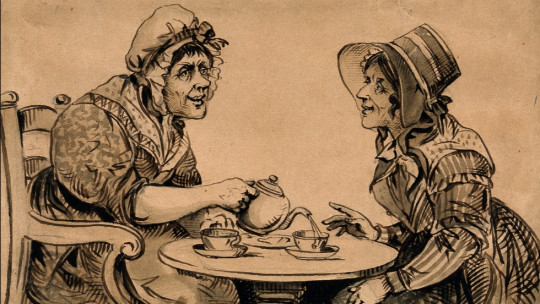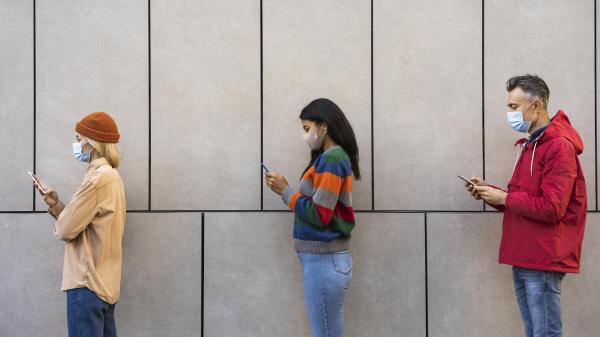Rumors and gossip are intrinsically social phenomena that have existed throughout history, playing a fundamental role in communication and interaction between individuals. Rumors are unverified information that spreads from person to person, often orally, generating speculation and expectation. These can address varied topics, from everyday events to more complex situations, and usually arise in situations of uncertainty.
On the other hand, Gossip has a more specific connotation, focusing on informal conversations about the personal lives of individuals These may include intimate details, curious anecdotes, or unexpected events in people’s lives. Gossip tends to focus on the interpersonal level and can be shared in a friendly, malicious tone, or simply as a form of social connection.
Both phenomena, although different, share the characteristic of being communication tools that are used to satisfy the human need to share information and build social connections. Precisely defining rumors and gossip is essential to understanding their role in society and exploring how these elements shape our daily interactions.
Therefore, in this article, we will delve into the world of rumor mill to understand in more depth where our impulse to gossip comes from. It is important to clarify from the beginning that these are normal social behaviors, and that as long as there is no deliberation behind them to harm third parties, rumors do not have to be intrinsically negative, painful or dangerous; They are also social and natural in their expression.
History and anthropology of rumors
The phenomenon of rumors has been a constant throughout human history, serving as a means of informal communication that has played a crucial role in various cultures and social contexts. In ancient times, rumors spread mainly by word of mouth, in bustling markets, public squares and taverns, places where information flowed easily.
In ancient societies, rumors often They served as a way to keep the community informed about significant events such as political changes, natural disasters or commercial developments.
Anthropology reveals that rumors were not only information media, but also had social functions. In tribal societies, for example, rumors contributed to social cohesion by keeping the community alert and engaged. The oral transmission of stories and gossip helped establish cultural norms and reinforce community identity.
During the Middle Ages, rumors became powerful tools in forming public opinions , especially in times of crisis such as epidemics. In the Renaissance, the rise of the printing press led to the rapid spread of news and rumors, marking a transition toward more sophisticated forms of social communication.
In the 20th century, with the arrival of mass media, rumors acquired new dimensions. Radio, television and, later, the Internet provided faster and more extensive channels for the spread of rumors, altering the social and political dynamics of contemporary society. Currently, our screens lead us to succumb to rumors in such a simple way that it is even difficult to become aware of what is real and what is not, especially with the rise of artificial intelligence that aims to challenge our perception, reaching limits to the limit. now unknown.
The psychology behind rumors
The spread of rumors is not simply a casual act, but is rooted in the complexity of human psychology. Understanding the psychological factors that drive the creation and spread of rumors is essential to deciphering their social function.
1. Curiosity and search for information
Human curiosity and the need for information are fundamental impulses that fuel the genesis of rumors. In situations of uncertainty or ambiguity, people tend to look for explanations and answers to understand their environment Rumors arise as a response to this innate need for understanding, providing a means to fill informational gaps.
2. Social psychology and sense of belonging
Social psychology also plays a crucial role in the spread of rumors. The tendency to belong to social groups and seek the approval of others drives the transmission of information between individuals. Rumors can serve as instruments of social cohesion, strengthening the connection between those who share information.
3. Need for social control
Furthermore, rumors often reflect collective anxiety and the need to control threatening situations. In times of crisis, creating and spreading rumors can act as a coping mechanism providing a temporary sense of security or control over the situation.
4. Importance of novelty and emotionality
Cognitive predisposition toward novelty and emotionality also contributes to the spread of rumors. Shocking or surprising content tends to capture more attention and be shared more quickly, influencing the collective perception of the information.
Social function of rumors
As we have been commenting, rumors, despite their often ephemeral and unverified nature, perform various social functions that have been fundamental throughout history and that continue to influence contemporary dynamics. These functions go beyond the simple transmission of information and are intertwined with emotional, cognitive and social aspects of the human experience
1. Creation of social links
Rumors can strengthen ties between individuals and communities. Sharing information, whether truthful or not, provides a foundation for communication and emotional connection In social situations, the discussion of rumors can act as a shared talking point, facilitating interaction and reinforcing group cohesion.
2. Construction of identity and belonging
Participating in rumor spreading can offer a sense of belonging and relevance. By being aware of information and contributing to its dissemination, people feel connected and updated, thus building a shared identity within their social environment.
3. Social adaptation
Rumors also play an adaptive role in society. In uncertain or changing contexts, The rapid spread of unverified information allows people to adapt and react to events in real time Although this adaptation can lead to errors, it demonstrates the human ability to respond and adjust to changing circumstances.
4. Expression of collective emotions and anxieties
Rumors often reflect the collective emotions and anxieties of a society. In times of crisis or uncertainty, the spread of rumors can serve as a mechanism of emotional expression, providing people with an outlet to share their worries and fears.
5. Social regulation and regulatory control
Rumors can contribute to social regulation by transmitting cultural norms and community expectations. By spreading stories that reinforce acceptable or unacceptable behaviors, rumors act as agents of normative control, influencing individual and group behavior.
Impact on personal relationships
The role of rumors in society is not limited to their global function; It also has a significant impact on personal relationships, both individually and collectively. Rumor Spread Can Influence Interpersonal Dynamics in Complex Ways affecting trust, perception and quality of relationships.
1. Trust and distrust
Rumors, sometimes unfounded or distorted, can undermine trust between individuals. Unverified information can raise doubts about the veracity of people’s actions and motivations, leading to mistrust and the breakdown of previously strong relationships.
2. Construction of stereotypes
The spread of rumors can contribute to the creation and perpetuation of stereotypes. Distorted or partial information can lead to the formation of biased perceptions, influencing how people are perceived and treated within a social group or community.
3. Influence on self-image
People who are the subject of rumors often experience a direct impact on their self-image. The dissemination of inaccurate information can affect the perception they have of themselves, generating anxiety, insecurity and, in some cases, leading to self-esteem problems.
4. Group dynamics
In collective environments, Rumors can shape group dynamics and affect social cohesion Conformity to the rumor narrative can generate exclusions or discrimination within a group, reconfiguring existing relationships and hierarchies.
5. Conflict resolution
Although rumors can spark conflict, they also have the potential to be tools for dispute resolution. Open communication and proper management of rumors can help clear up misunderstandings and facilitate reconciliation in conflictive situations.
Conclusions
In conclusion, rumors and gossip, despite their often ephemeral nature, perform social functions rooted in human psychology and cultural dynamics. Its role in identity construction, social adaptation and normative regulation highlights its importance in human communication. However, it is crucial to recognize the challenges associated with the spread of unverified information, as it can have a lasting impact on personal relationships and interpersonal trust.









